Buenos Aires, bold, beautiful, and far from almost everything, has so much pride—and rightly so. This is the place where tango was born, where Borges tended the National Library, where protests for women’s rights would start and then sweep over the rest of Latin America. This place on the shores of the Rio de La Plata is a city of immigrants from all corners of the Earth—Japan, Wales, Venezuela, Italy, and so many more countries—that has woven these newfound residents into its essence and produced a city stronger, more cultured, and more interesting for it, evidenced in its architecture, cultural centers, and diverse food scene.
Though the Greater Buenos Aires Metropolitan area has a population of 15 million, you’ll find it easy to get to know people here, Porteños (people native to Buenos Aires) can be quite chatty and inclusive, especially if a bottle of wine and a good travel story are involved. Read on to know our go-to spots for luxury accommodation, culinary delights, and distinctly Buenos Aires experiences in this Extraordinary City Guide to Buenos Aires, Argentina.
Our Favorite Buenos Aires Neighborhoods
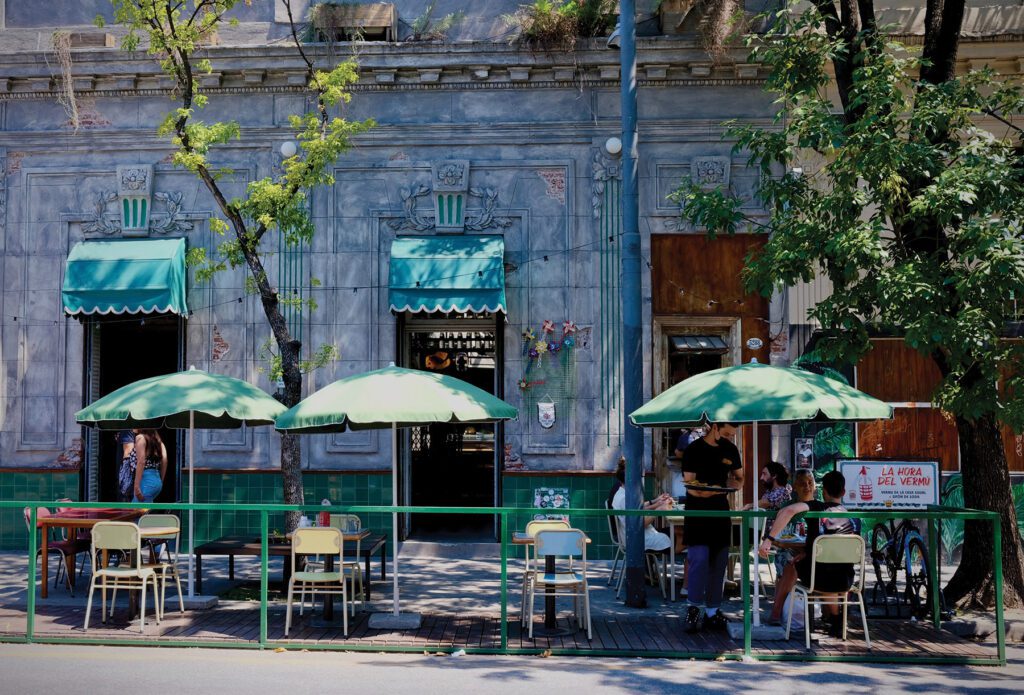
Buenos Aires has 48 neighborhoods and far more than that in its suburbs. While it might seem daunting trying to decide where to base yourself, there’s only a handful of neighborhoods to stay in to be near the main nightlife, entertainment, and restaurant scenes. Colorful Palermo is the largest of the neighborhoods and split into the sub-neighborhoods of Palermo Hollywood, Palermo Soho, and Palermo Chico. Much of the city’s nightlife and standout restaurants, like Niceto Club and Tegui can be found here, as well as Rosa Dahl, a gorgeous rose garden and MALBA, the city’s best-known modern art museum. Bordering Palermo is the refined neighborhood of Recoleta, home to hidden cafes and bars and Rappanui, possibly the best ice cream and chocolates in the country. Here you can also go to Recoleta Cultural Center where dance and music performances happen amongst art exhibits and workshops.

Further south is San Telmo, the oldest neighborhood in the city. San Telmo feels like a small town in a big city. Here you can sip mate in Parque Lezama, wander down Calle Bolivar for some of its best culinary offerings, and visit multiple museums ranging in subject from Latin American art to Antarctica. A short walk towards the water from here will take you to the Ritzy Puerto Madero, full of high rises, parks, riverside restaurants, and the only ecological reserve in the whole city.
The Best Luxury Hotels in Buenos Aires
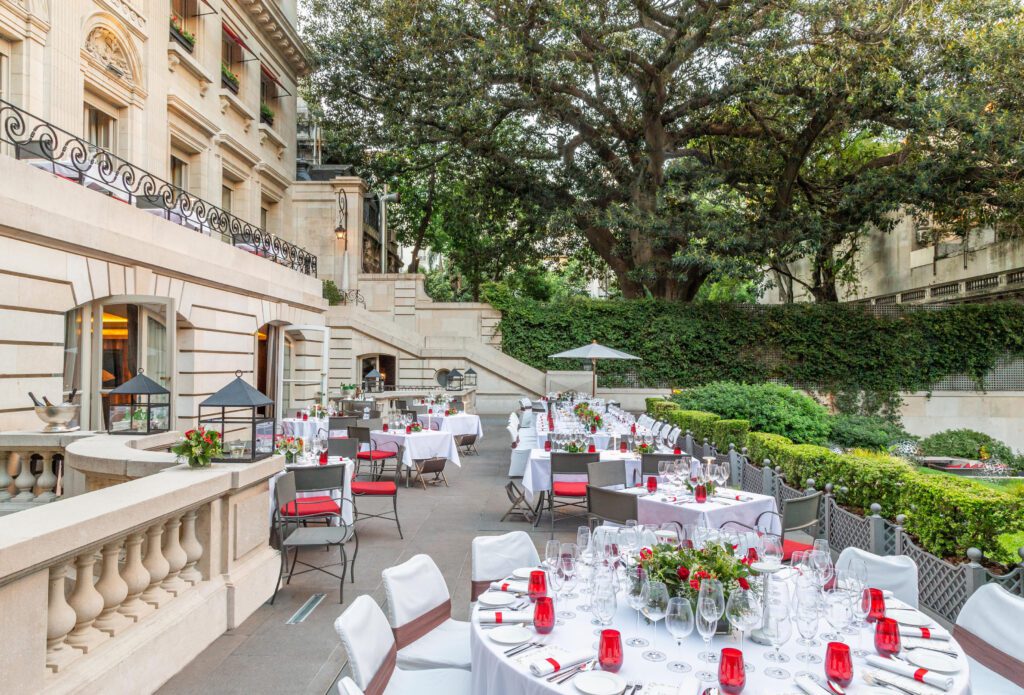
Originally built in 1934 in the Neoclassical style, the Palacio Duhau is one-part mansion, one-part tower, and all parts luxury hotel. Running the length of an entire block in the Recoleta neighborhood, its terraced gardens and onsite art gallery are just a few of the amenities on offer here. Made up of 165 rooms and 23 suites, all come with balcony views of the city or the hotel garden, and personalized butler service, ensuring your stay will be curated to your preferences. King-sized beds, complimentary Celedonio Lohidoy-designed toiletries, and marble bathrooms with rain showers make the stay highly comfortable. Some rooms also come with fireplaces and walk-in closets. A spa, pool, gym, bar, ballroom, and several restaurants round out the grounds.
Tucked into the Palermo Soho neighborhood, this boutique hotel with warm, attentive staff was Francis Ford Coppola’s rented house in Buenos Aires while filming Tetro. Enchanted by the property, partnered with the Bourbon Hotel & Resort chain to make it into a hotel for others to experience the joy he had here. With three levels of gardens, a library, a solar-heated pool, and décor handpicked by Coppola and his wife Eleanor, the space feels comfortable, charming, and stylish all at once. Stay in Nieta’s Studio if you want to have the same room Coppola did when he was filming, or choose from one of the other six rooms on offer, all of which have plenty of natural light, plasma TVs, and include complimentary breakfast and tea time service.
A concept hotel with 11 suites Hub Porteño combines comfort and convenience in stylish Recoleta. Outfitted with king-sized beds, high ceilings, jacuzzi-style bathtubs, and unique pieces of vintage furniture in each room. The Grand Suite additionally includes a private terrace and living room complete with a rocking chaise lounge. Guests can also participate in the Porteño Friend program, in which local guides lead typical Buenos Aires experiences, such as drinking mate, wine tasting, or attending an intimate folkloric concert. An exclusive steakhouse, La Pecora Nera Grill is also onsite.
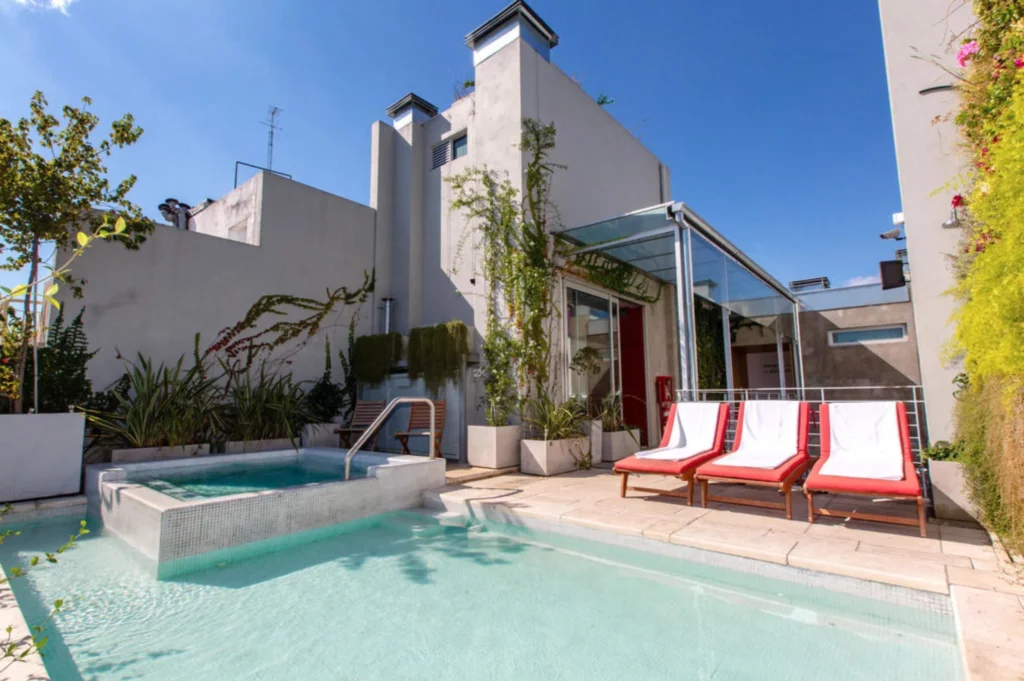
Claiming the title of the first urban green hotel in Latin America, this boutique spot is found at the top of Palermo Hollywood neighborhood, not far from the city’s fairytale-like forests, Los Bosques del Palermo. Built to LEED standards, it holds over 800 plants, including 90-foot-high vertical gardens. Composed of 12 premium rooms, 12 deluxe rooms, and two suites, which all come with private balconies, flatscreen TVs, and extra-large showers or hydromassage bathtubs. The floors and walls are insulated and soundproofed (a huge comfort on the weekends as Palo Santo is close to some of the city’s best bars and clubs). Lounge by the pool or take a dip in the jacuzzi on the rooftop, then enjoy Argentine staples from the onsite restaurant set in a garden of fragrant jasmine and agapanthus flowers.
The Best Restaurants and Bars in Buenos Aires
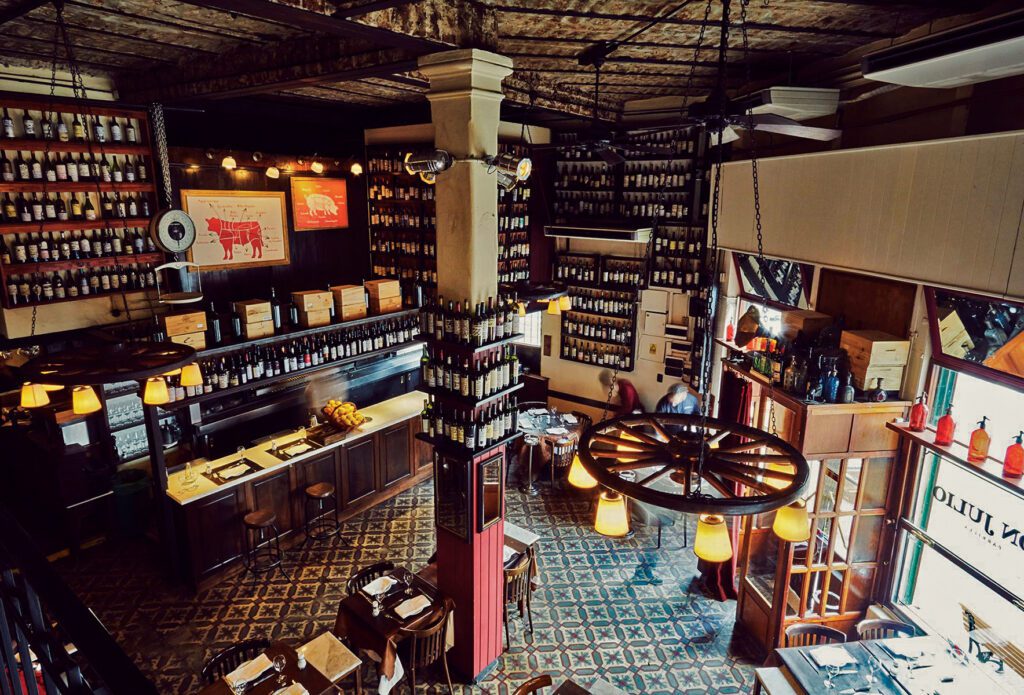
You can eat any type of steak any day of the week at lauded grill Don Julio in Palermo Soho. Open for lunch and dinner until 1 am, grill masters place prime cuts of grass-fed beef like the bife de chorizo (ribeye), bife de lomo (tenderloin), or vacio (flank) on the central parilla (the word for both grill and steakhouse). Order the goat cheese provoleta for an appetizer, and pair your meat with a glass (or bottle!) of Malbec from their expertly curated wine list. Expect top-level service along with perfectly-cooked steaks. Opened for over 20 years and frequently accruing accolades, like being named multiple times on LATAM’s 50 Best Restaurants list, has made Don Julio insanely popular with both Porteños and tourists. Make sure to book a reservation.
Oddly, Chuí feels simultaneously comfortable and wild. Set partially in a forest garden and partially in a repurposed blacksmith shop, the space has a jungle feel and a campfire scent. Cooks fire thin-crust pizzas and veggie-based dishes over flames in the open kitchen. On the far wall, a small mushroom farm gets misted every so often beneath the glow of firefly yellow light, while chiles dry on a small cart beside them—all of which get used in various dishes here. The menu is made up of large tapas, like the honey-sweet queso llanero, a burnt cheese dish, as well as entrees, and small desserts, such as the butterscotch mousse. Drinks range from freshly pressed green juices to wines and vermouth. Reservations recommended.
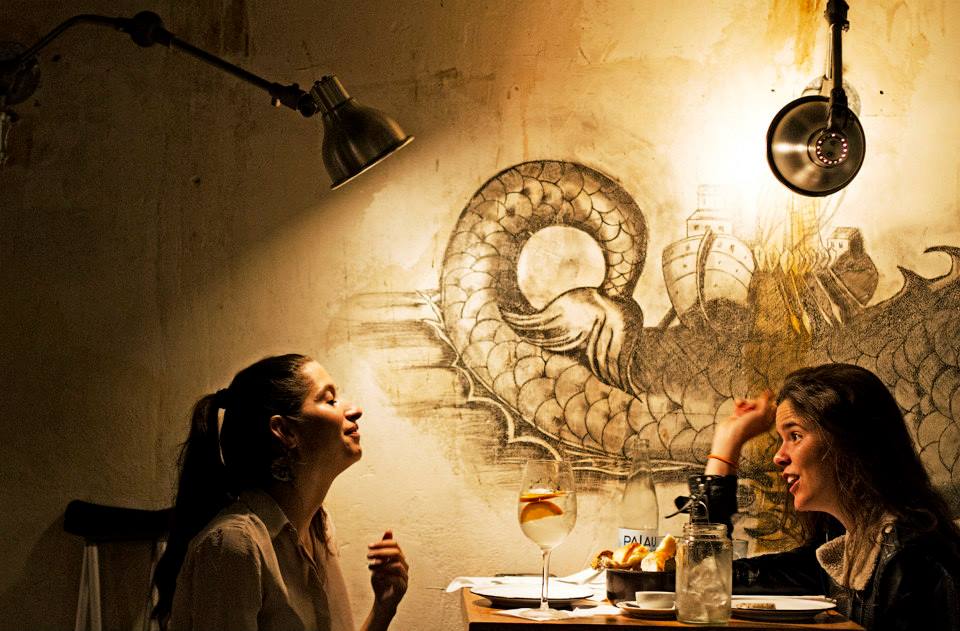
A speakeasy located below a posh flower shop in Recoleta, Florería Atlántico is a nautical-themed haven of cocktails, wines, and plates honoring Argentina’s strong immigrant history, as well as native peoples. Using sustainably sourced ingredients from regional farms and plenty of owner Tato Giovannoni’s gin line (Príncipe de los Apóstoles), the drink menu tells the history of Argentina through its names and ingredients. Try the Aymaras y Quechuas, a pisco-based cocktail containing coca leaves, tree corn, and quinoa or the Ostende, a tribute to Belgian hotel entrepreneurs that is a mix of absinthe and lemonade. Reservations recommended, unless you want to grab a seat at the long bar when you show up (though you’ll most likely have to wait).
This land of spiced pumpkin cheesecakes, heavenly hazelnut cookies, and specialty coffee lies about a 20-minute drive outside Palermo in Saavedra, however the trek’s worth it to try some of the most creative pastries in Buenos Aires. Here at La Kitchen Madonna tunes play and chefs that look somehow hip without being pretentious craft both savory and sweet concoctions: croissants with creamy strawberry and cheese filling or asparagus and parmesan Danishes. The drink menu is equally delightful with strawberry and thyme infusions, kombucha, and fun wines, like the Subversive Rose. You might have to wait in a short line during peak hours, as they don’t take reservations, but the staff moves efficiently and there’s always a table available on the patio or in one of their three inner rooms.

Join a tasting night or self-serve at this Villa Crespo wine bar. Over 100 labels across Argentina are on offer, several of which come dispensed through temperature-controlled machines. Simply fill a card, then swipe at each individual machine to select a taste, a half glass, or a full glass of your chosen libation at Vico Wine Bar. Head Sommelier Pablo Colina also hosts Catas con Moño, special tasting events in which he selects six wines, speaks about their history, and serves seasonal dishes alongside the pours. While the tasting nights require advance reservation, you can show up without one for the regular wine bar. A Malbec is an obvious choice, but ask the staff to recommend a Torrontés as well, a white wine variety grown almost exclusively in Argentina.
As soon as you enter the door of ÖSS Kaffe, you feel as if you’re in the living room of a very cultured friend with expert knowledge of coffee and design. The café, based around a large bar, removes the typical barriers of most coffee shops, allowing for free flow conversations between baristas and patrons, as well as plenty of opportunities to admire the mastery of the staff’s hand-pull methods. Designed and owned by architect Fernando Iglesias Molli, when you try that first sip of your cappuccino or cold flat white, you’ll know he put as much effort into designing the space as he did sourcing the coffee and hiring an expert team. Beans come from Central and South America, and the menu spans coffee cocktails and delectable baked goods, like the pão de queijo. No reservations are required, and be on the look out for popup performances from jazz duos or lone violinists.
Not-to-be-missed Experiences Around Buenos Aires
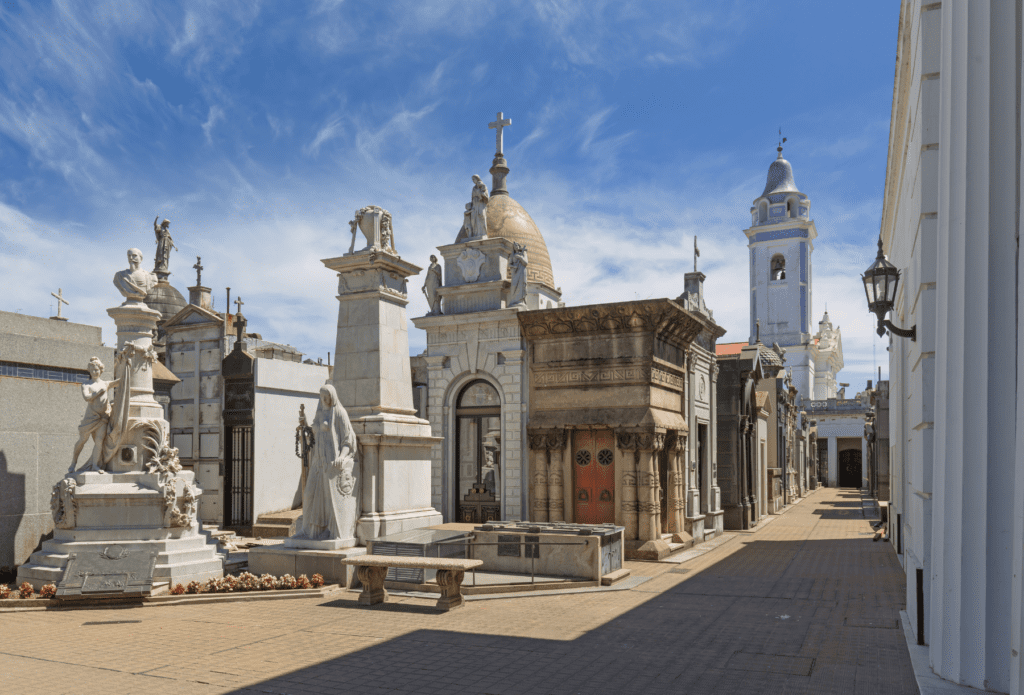
Walk the labyrinth of Recoleta Cemetery
In this city of the dead—often said to be one of the most beautiful cemeteries in the world—mystery, myth, and a cacophony of architectural styles meet to create a beautiful yet haunting place. Graves, mausoleums, and statues built in baroque, neo-gothic, Art Deco, and Art Nouveau styles enshrine some of Argentina’s most famous deceased personalities, like Evita Peron. Walk the cobblestone pathways past the marble mausoleums to catch glimpses of stray cats and possibly hear the footsteps of former grave keeper David Alleno, whose ghost is said to visit at sunrise. Some of the crypts have glass walls you can see through where families have made distinctive memorials to the deceased, such as the reconstruction of the bedroom of Liliana Crociati. We’ll arrange tickets for you to arrive—it’s a must-see.
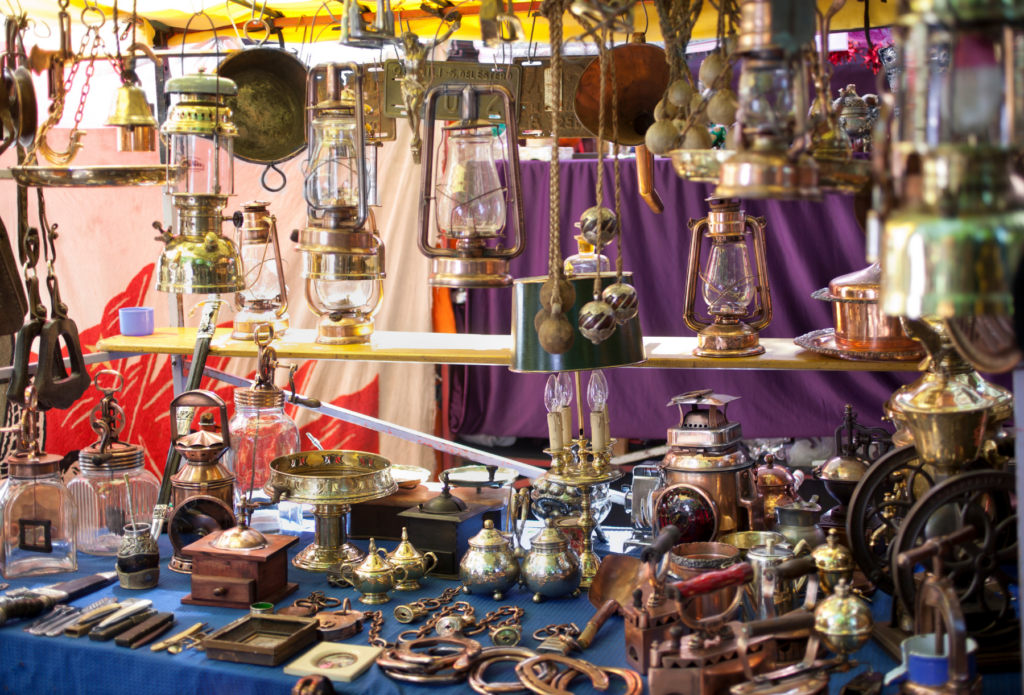
Shop in San Telmo Mercado
The focal point of the bohemian neighborhood San Telmo—the San Telmo Mercado—dates back to 1897 when architect Juan Antonio Buschiazzo designed it to serve as a food market for European immigrants. Today, you can still buy high-quality fruit, vegetables, and meats, but it also houses antique stalls, vintage clothing shops, toy stands, restaurants, and third wave coffee at Coffee Town, located directly under the central dome of metal and glass. Sundays are the busiest days to visit, when Calle Defensa, one of the streets bordering the market, hosts the weekly San Telmo street fair where artisans and street performers come to sell their wares and display their acting or musical abilities and people dance in the streets. Also worth checking out is Jessica Kessel’s showroom cata-cornered from the market, where you can buy designer leather boots, sunglasses, and wallets in bold colors.
Appreciate the Arts in Ateneo Grand Splendid and Teatro Colón
Both theaters, El Ateneo Grand Splendid and Teatro Colón, are some of the most famous buildings in Buenos Aires. Since El Ateneo’s opening in 1919 though, it has transformed into a bookstore, often appearing on lists of the world’s most beautiful bookstores. Where famed singer Carlos Gardel once recorded and ballerinas once pirouetted across the stage, you can now browse shelves of books mostly in Spanish, though you can also find English translations of popular Argentina comic Mafalda. In contrast, Teatro Colon has always been a theater, and a prolific one at that, with acoustics matched by only a few other venues in the world. Notable conductors, opera singers, and dancers (Igor Stravinsky, Maria Callas, and Anna Pavlova) have performed here. Interested in seeing a performance or taking one of the two English tours given daily? We’ll arrange that.
Learn the Varied History of Plaza de Mayo
Plaza de Mayo has long been a place of protests, marches, and remembrance, deeply tied to the psyche of Argentina. Spanning out from the Casa Rosada, the Argentine seat of government, Plaza de Mayo has hosted protests of the Madres de la Plaza de Mayo (the mothers and grandmothers of those who disappeared during the military dictatorship of 1976 to 1983), Ni Una Menos (a grassroots feminist movement), and even the wake of late soccer god Diego Maradona. While some protests can be quite jovial, others can turn intense. It’s best to visit on a day when nothing is planned to be able to walk around and visit some of the buildings that border the plaza too, including the Museo del Bicentenario, a museum chronicling Argentina’s political history.
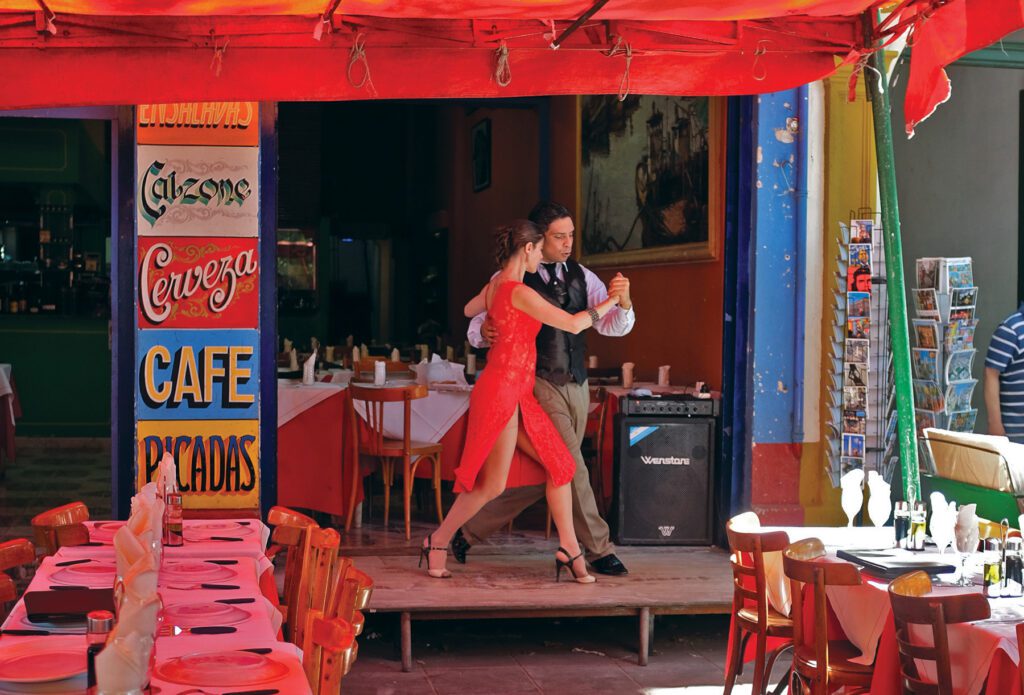
Dance Tango
Developed in the rough and tumble southern neighborhoods of Buenos Aires in the 1880’s, tango—that dance of desire, intricate struggle, and tangible longing—can now be danced, watched, and learned throughout the city. Go to a show, take a class, or do both plus dinner at places like Gala Tango, or simply see a street show in Caminito in La Boca or at Plaza Dorrego in San Telmo. However, to get away from the tourist route and see the more local tango scene, go to a milonga (a dance event) at places like Salón Canning and El Beso. If you want to take a few classes before stepping on the dance floor, consider buying a pack of classes or private lessons from a dedicated school, like La Mariposita that instructs a range of beginner to advanced students.
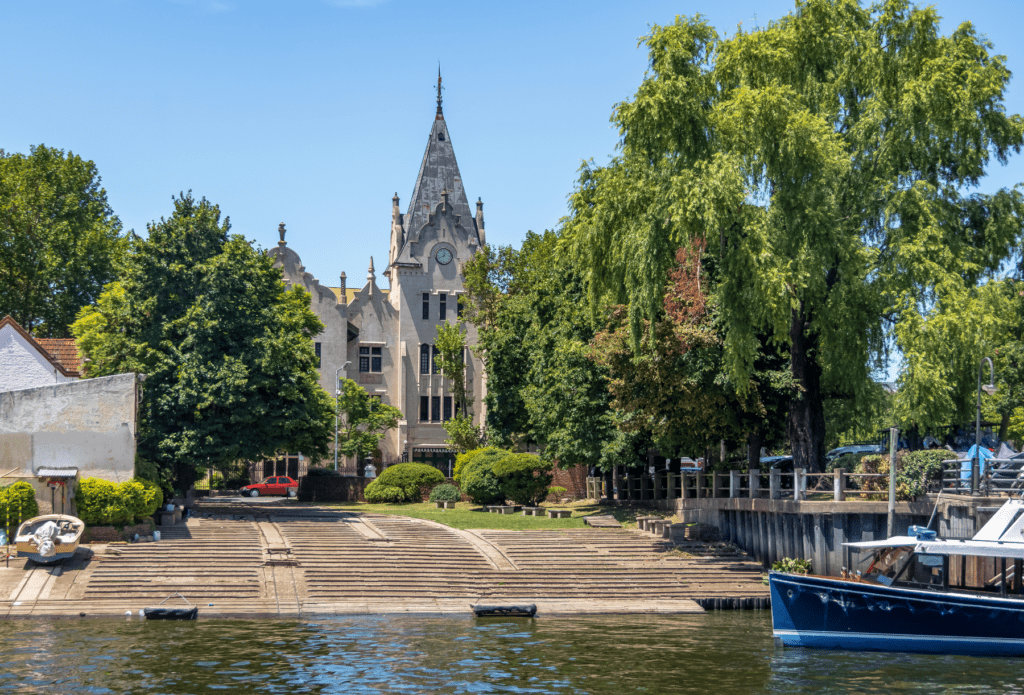
Easy Day Trips from Buenos Aries
The two most popular day trips from Buenos Aires are Tigre and Colonia del Sacramento, Uruguay.
Tigre, a town in which river tributaries act as streets, can be reached by taking the train from Retiro station to the end of the Mitre line. Once there, you can visit the mate museum, take a boat tour, and shop for handicrafts in the Mercado de Frutos.
If you want to explore another country for a day and enjoy visiting UNESCO World Heritage sites, take the ferry across the Rio de la Plata to Uruguay, to see the town of Colonia. The whole historic quarter of Portuguese and Spanish colonial architecture is a protected UNESCO site, where you can take pictures next to ruins, venture to the top of the lighthouse, and eat a meal of fresh fish and white wine in Charco Bistro’s patio right next to the water.

So there you have it—our Extraordinary guide to Buenos Aires, Argentina. Do we have you convinced to visit one of the coolest cities in South America yet? Reach out to an Extraordinary Journeys South America specialist to book your trip to Argentina, starting with some time spent in this wonderful city.
Luxury Argentina Vacations that Visit Buenos Aires
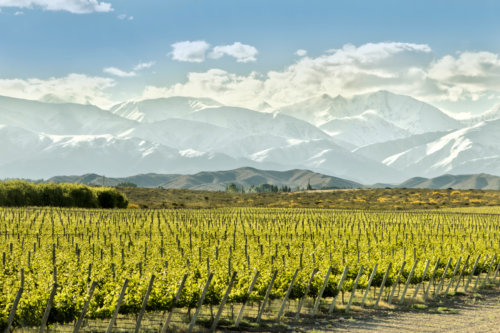
- Itinerary
The Best of Argentina
Argentine lakes, glaciers, waterfalls and wine-tasting
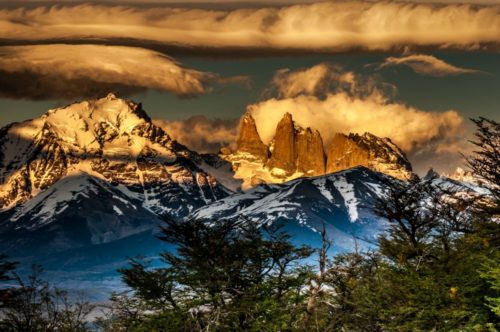
- Itinerary
South America’s Patagonian Highlights
Glaciers in El Calafate, mountains in Torres del Paine, sophistication in Buenos Aires & Santiago
